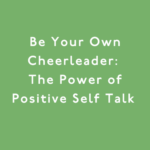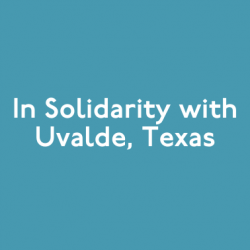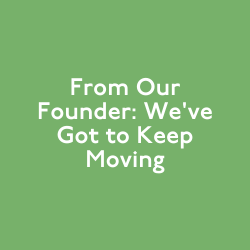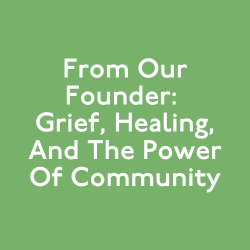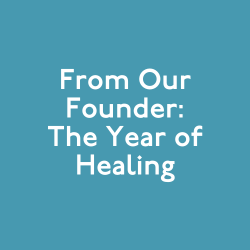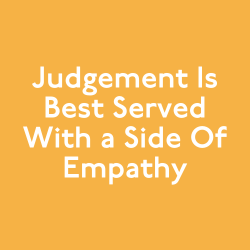Written by Founder and CEO, Sara Potler LaHayne
As leaders and entrepreneurs, our sense of creativity waxes and wanes. There are days when I feel like I could light the world on fire with my ideas, and there are days where I feel like my eyes are glazed over and I am my own greatest bore. There are weeks when I make it to dance class with regularity and pick up new choreography with ease, and there are weeks when I am drowning in investor dinners and spreadsheets and don’t feel connected to my creative self in the slightest.
Time is the greatest gift to creative people. When we have it, we can pursue our biggest, boldest ideas. When we are short on it, we feel constrained, limited, boxed in, confined, maybe even suffocated. If we are spending all of our time doing things that eat up our spirit, it can be hard to find the time we need to create with abundance and get into a state of flow.
The problem is that many schools and places of work zap our creativity by focusing on testing and results, ignoring the process it takes to achieve the desired outcome. As leaders, it’s up to us to provide the space for ourselves and our employees to be creative so we can create the best possible product, service, or solution.
We need mental, physical and emotional space to engage creatively. Unfortunately, when we’re building big things and solving complex challenges, we often feel pressure to move fast. We may not allow for the full discovery process to unfold. If I am on deadline or feeling as if I’m operating in a deficit, I don’t have the fullness of myself to bring to my colleagues, my partners, or my nascent, budding ideas. On the other hand, my greatest ideas are when my mind is clear, when I’m on a run, or taking a shower, or sweeping my toddler’s dinner off of the floor.
3 Ways to Make Time for Creativity
We have to create the space where creativity can blossom. The tension between free time, open space, structure, and even boredom, is real. How much structure should we place on our time or on our creative goals? Sometimes when time abounds and there are no expectations, we can feel unfocused or lazy. But when we’re overly structured and overly prescribed, it can be hard to find creative inspiration.
Here are ways we can unlock creativity in ourselves and our teams to achieve our full potential:
-
Cultivate boredom intentionally, and use it strategically. Lock yourself in a quiet space. Put your phone away. Digital devices and multitasking make it difficult to engage in meaningful work. It’s hard when we’re in a 24/7 news cycle with constant notifications and distractions pulling us away, but we can lock it all out and go toward the silence. Boredom leads to having time and space and openness for new ideas. Choose to be bored. Choose to engage where you are and be without stimuli that is preventing you from hitting your creative flow.
-
See and experience as much of the world as you can. I once took an improv class where the teacher constantly reminded us it was our job to “know stuff.” By being aware of politics, culture, media and art, we were able to draw on those situations in the world for our improv scenes. If we live in a bubble and aren’t experiencing what’s happening around us, we don’t have the creative inspiration to generate new ideas. It’s important that we allow ourselves, and our employees, space to get out there.
-
If we’re committing to the creative process, we also have to learn to deal with rejection. Not everyone will share your creative interests or preferences. You’re not doing this to be 100 percent accepted. You’re doing this because you have ideas worth pursuing, and by doing so you become a more interesting, well-rounded, innovate leader and person in the world. Often times, we have to fail or sift through ideas that don’t quite work in order to get to the best option.
When we need a solution to a problem, we want it fast. Now. Yesterday. But the fastest solution isn’t usually the best one. Often times, we may have to revisit the issue because it wasn’t truly solved. Not only is that a waste of time, it’s a quick way to burn your team out. They won’t feel included, or like they are solving the big picture problem they signed up to fix.
Whether we like it or not, it takes time to put our best foot forward. We need to allow more time for the creative process to unfold. Your team, investors, and customers will all be grateful you did.
6 Tips for Unlocking Personal Creativity
-
Work on a boring task or assignment. This gives us a break and allows our mind to wander while we engage in the menial task and return to the creative project with new energy and inspiration.
-
Tell your own story and find your own voice. Embrace your own vulnerability and the opportunity to put your own experience and your own ideas out there.
-
Build creative endurance. Allow yourself to get to flow. Push yourself to stick with it even when you’re bored by yourself. Move through the boredom. It will pass, and sitting in the awkwardness of the project will make your creative muscles stronger.
-
Don’t put your work into a box or label it. Think about how you felt experiencing the creative process, and what feelings your creative work might evoke- not whether it is good or bad. Let go of that self judgment and embarrassment. Being creative is not about mastery, it’s about the process and the experience.
-
Let your mind wander. We talk a lot about being mindful and focusing on our breath and attention. What if, separately from the three minutes of mindful breathing and focus that we build into our morning, we allowed ourselves three minutes of letting our minds wander and go wherever they want? Who knows what new ideas may form.
-
Work through the fear. When you feel self conscious or afraid, work harder. Lean into that discomfort and uncertainty and work early in the morning and late at night. Often times when I bore myself doing my Artist Way Morning Pages, after a few days in a row of boredom and perseverance I break through and have the idea I’ve been waiting for.
We are all artists. It’s how we choose to nurture and cultivate that identity and skillset that takes us further on our creative paths. It wasn’t until I was six years into building Move This World that I a friend and accountability partner called me out for neglecting myself as a dancer and had squashed that identity to focus on raising money, managing staff, and putting out fires.
This article was originally published by EdWeek Market Brief on May 2nd, 2019.





